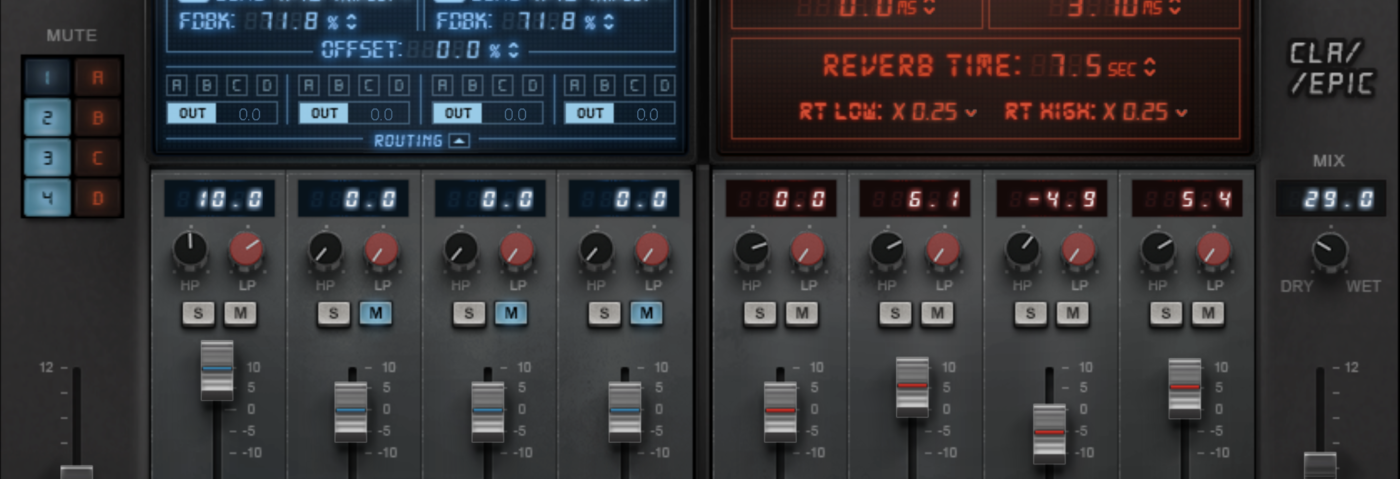Waves’ latest effects plugin combines four delays with four reverbs. Is more necessarily better?
If you’re like us, you likely have a hard drive full of delay and reverb plugins. You probably have a few go-to favourites that get loaded into every session as well. But try as you might, you just can’t get your spatial effects to sound like those on the top records. You can get big, you can get maybe even get clear, but how to bring it all together into one lush whole?
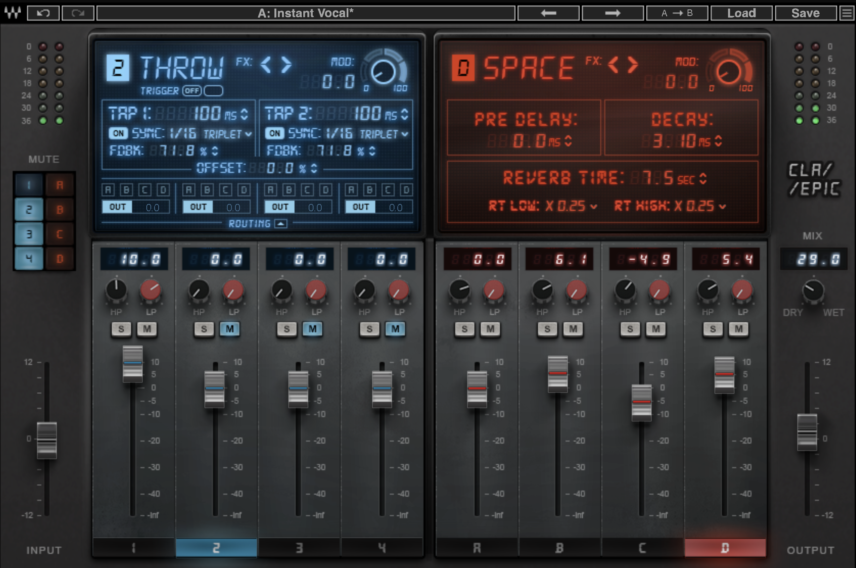
Mixing engineer Chris Lord-Alge is renowned for his vocal sound. He’s brought his signature sound to records by Green Day, Muse and Bruce Springsteen (among many others). He also occasionally works with mixing plugin specialists Waves, bringing some of his workflow to bear in releases like CLA Vocals and others in the Chris Lord-Alge Signature Series. Now he’s leant his significant expertise to CLA Epic, a delay and reverb plugin that aims to recreate the effects hardware and chain used on many of his hit records.
CLA Epic is essentially eight plugins in one: four delays and four reverbs. There’s a mixer-style fader for each effect, as well as comprehensive routing functionality. Imagine you’re sitting at Lord-Alge’s mixing desk and have access to his hardware and settings. The patch bay is already wired up for you. Just route the signal as you like, make adjustments to the settings, and listen to the magic unfold.
Delays For Days
CLA Epic is laid out with delays on the left (and first in the signal) and reverbs on the right. As previously mentioned, there are four delays. Let’s go over these individually and in detail, as there are some unusual effects on offer.
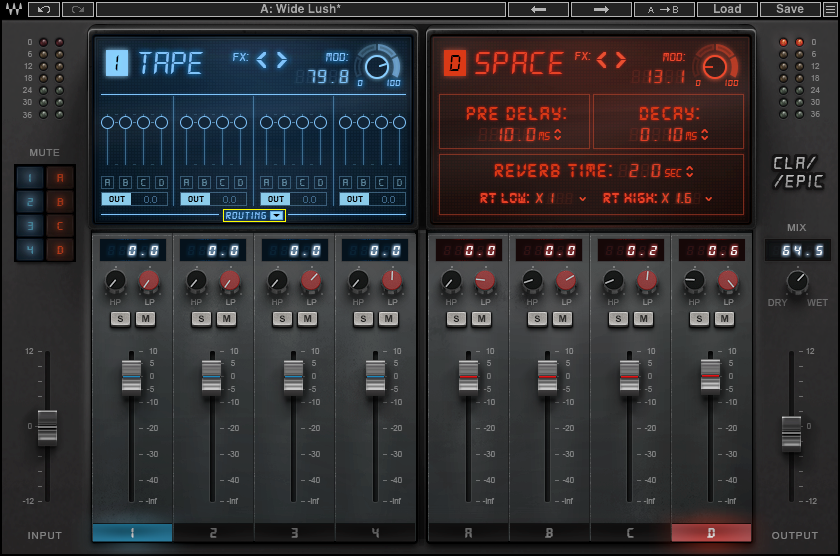
At fader position 1 is Tape, a tape-style delay with two separate units, Tap 1 and Tap 2. They each have their own time, sync, and feedback controls. There’s also an offset to adjust the amount of difference between the two. It’s a clean tape-style delay and is capable of everything from tamed, synced repeats to wild and extreme feedback effects. The two taps are panned apart as well, which makes adding stereo width as easy as turning it on.
Fader position 2 houses Throw, a second tape delay with similar settings to Tape. However, Throw is activated by a trigger, which can be set manually or with automation. Throw is intended for adding dub-style effects to a single word, sound or note. This is much easier than futzing with automation with a traditional tape delay to catch just one word in a phrase.
Moving to the right, number 3 contains Slap, a traditional delay good for slap back and basic repeat-style echoes. Along with the usual time and feedback setting, it has three EQ settings in the form of tape speed options: 7.5, 15 and 30 ips. Slower speeds result in a darker, bassier sound while higher speeds sound brighter but with a slight loss in bass response.
Lastly, fader 4 has Crowd, a unique CLA invention. This creates a series of increasingly longer repeats that diminish over time. It can result in a rich and lush sound, sort of like a chorus effect without the pitch smearing. There’s only one control, a slider that goes from Tight to Wide. It’s a lovely effect and a real highlight of the plugin.
Lastly, each effect has its own, independent modulation knob. Lower settings add width while cranking it introduces pitch warbles and other interesting effects.
Reverberations
To the right of the delays and next in the signal path are the reverbs. As with the delays, there are four available.
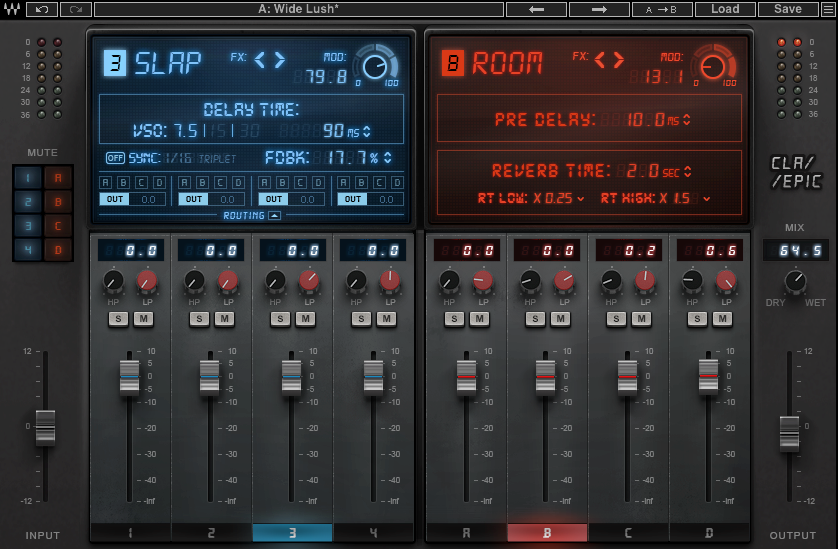
Starting on the left, fader A controls volume for the Plate reverb. It’s based on Lord-Alge’s favourite vocal reverb and offers controls for pre-delay, reverb time, and high- and low-frequency damping.
Next up in slot B is Room, a gorgeous melding of several different reverbs captured at the same buss. Controls include pre-delay, reverb time and damping.
Continuing to the right, fader C houses a Hall. This is similar to the plate but has a different EQ curve. Indeed, it’s a bit darker and more physical-sounding, yet no less gorgeous.
Lastly, there’s Space in slot D, a non-linear reverb that excels at the kinds of huge reverbs that are in vogue now.
As with delay, each reverb has its own modulation knob as well.
Think Globally
Each of the individual delays is lovely on its own but that’s not the point of CLA Epic. Why have eight different effects units in one if you’re not going to use them all together? While you certainly could throw Epic onto a channel and use it to add some simple reverb vibe to a snare, you’re probably going to want to use it in situations that require more of a dense effects chain. And that’s Epic’s selling point: it’s Chris Lord-Alge’s delay and reverb effects chain reproduced in digital form.
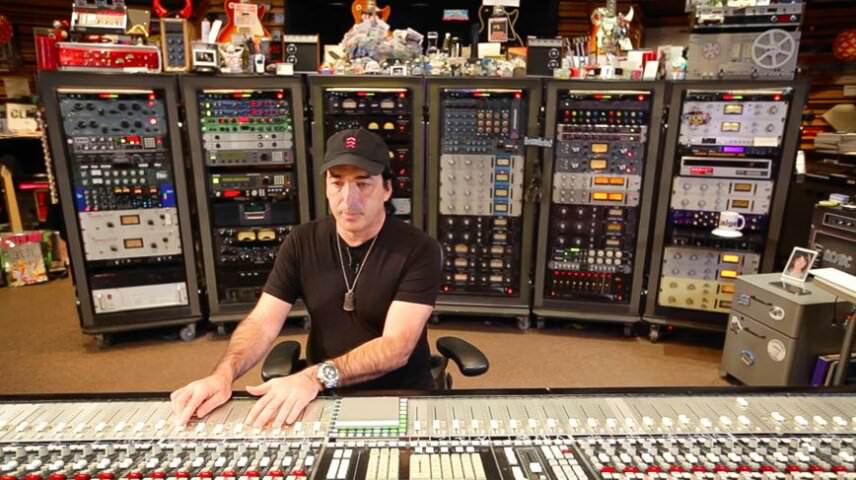
Getting four or five effects working together can have a cumulative effect that is more than the sum of its already stupendous parts. Big washes, huge spaces, unique textures—these are all run of the mill for Epic. Of course, there are times when you don’t need to be so, erm, epic, and that’s where the mixing controls come in.
Mix It Up
As we alluded to before, CLA Epic is arranged like a mixing board, with each effects processor at the top and volume faders for each of its four effects lined up below. This way, you can control how much of the original signal heads into each effect. As you’d expect from a mixing desk, there are also mute and solo buttons for each effect section, making it easy to get the balance you need quickly. It’s an elegant solution to what could have been a confusing GUI. Everyone already knows how to use a mixer. You don’t have to think about it.
Each channel also has high-and lowpass faders for controlling rumble and sibilance, and there’s a global wet/dry balance at the end.
Routing Abounds
Lastly, there’s a comprehensive routing section built-in to the delay portion to control where your signal goes. Each of the four delay effects has its own routing centre, with buttons for each reverb destination, A, B, C and D. You can route each delay to any of the four effects (for a series configuration) or bypass them entirely and send it straight to the output (a parallel configuration). There’s also nothing stopping you from doing both at the same time. You could conceivably have four delays, with each delay then streaming into each of the four reverbs as well as straight to the output. That’s a lot of sound.
To further help you out, Waves have included individual routing sliders for each effect. This way you can control the amount going into each reverb independently of the front mixer faders.
There doesn’t seem to be a way to route delays into other delays, or from reverb to delay, but you can bypass delay altogether by muting all of the delay channels.
A Unique Approach
There is no shortage of solid delay and reverb effects on the market, many doing similar things to the individual effects on hand here. But none of them offers the kind of combinations possible with CLA Epic. You could, of course, set up your own routings, using your own plugins, but even then you’d be missing out on the fun modulation controls (and not to mention the Crowd effect, which is lovely).
Waves have a winner with CLA Epic. Given its unique structure and quality of sound, it’s sure to become a production staple. We’ll certainly be rinsing it every chance we get.
(Waves are also offering a version with a single delay and reverb each called CLA EchoSphere that was free as of the time of this article.)
The Verdict
Price: $69.99 ($199 after Cyber Monday, 2020)
Purchase: Waves CLA Epic
The Final Word
CLA Epic is a lush and versatile single plugin solution for delays and reverbs.
